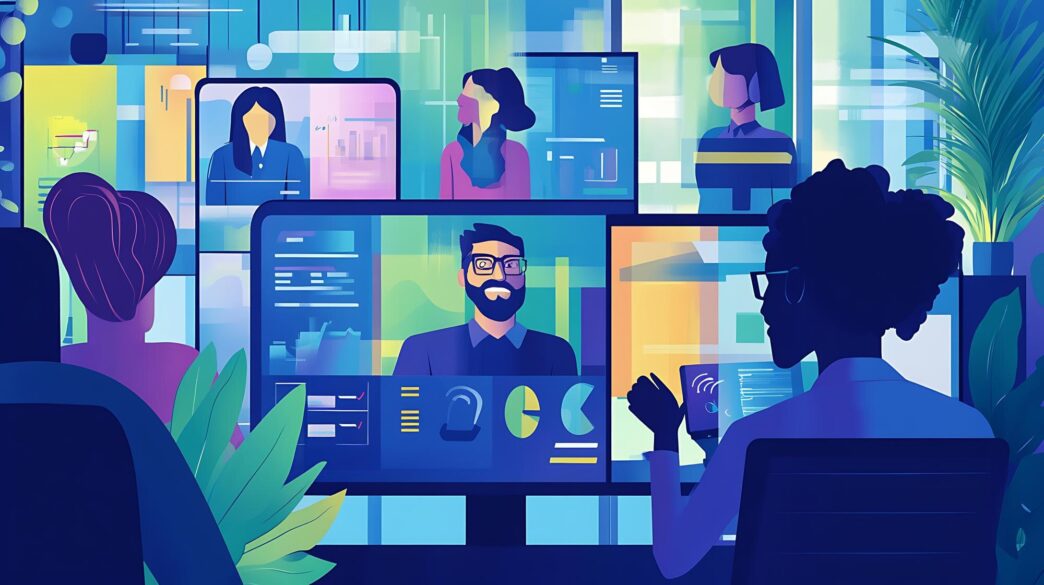Executive Summary
The Trajectory So Far
The Business Implication
Stakeholder Perspectives
Asynchronous collaboration, a cornerstone of modern distributed and hybrid work models, empowers teams to achieve peak productivity by enabling work across different time zones and schedules without requiring simultaneous presence. It involves individuals contributing to shared projects and goals at their own pace, leveraging technology to communicate, share updates, and move tasks forward even when colleagues are offline. This strategic shift is vital for organizations seeking to enhance efficiency, foster deep work, and provide greater flexibility to their workforce, ultimately driving growth and innovation in a competitive global landscape.
Understanding Asynchronous Collaboration
Asynchronous collaboration fundamentally redefines how teams interact and complete tasks. Unlike synchronous communication, which demands immediate, real-time responses like live meetings or instant messaging, asynchronous methods allow for delayed, thoughtful contributions.
This approach fosters an environment where team members can focus deeply on their work without constant interruptions, contributing when they are most productive. It is particularly beneficial for global teams spanning multiple time zones, eliminating the need for inconvenient meeting times and promoting more inclusive participation.
The core principle is clear, well-documented communication that provides sufficient context for recipients to understand and respond effectively, regardless of when they access the message or task.
Why Asynchronous Collaboration Boosts Productivity
The shift to asynchronous workflows offers several compelling advantages for productivity. It directly addresses the challenge of meeting fatigue, freeing up valuable time that would otherwise be spent in often unproductive live sessions.
By allowing individuals to work during their peak concentration hours, rather than being dictated by a shared meeting schedule, asynchronous collaboration supports deep work and higher-quality output. It also creates a comprehensive, searchable record of decisions and discussions, reducing miscommunication and providing a valuable knowledge base for current and future projects.
This method inherently promotes a culture of documentation, ensuring that project progress, decisions, and rationale are clearly articulated and accessible to everyone on the team, regardless of their location or start time.
Essential Categories of Asynchronous Tools
The market for asynchronous collaboration tools is robust, offering specialized solutions for every aspect of team operation. These tools are generally categorized by their primary function, though many offer overlapping features to create integrated workflows.
Choosing the right combination of tools is critical for building an effective asynchronous environment. The goal is to create a seamless flow of information and tasks that supports rather than hinders independent work.
Project Management and Task Tracking
These platforms are the backbone of any asynchronous operation, providing a centralized hub for organizing work, assigning responsibilities, and tracking progress. They replace the need for constant verbal check-ins with transparent, always-on status updates.
Tools like Asana, Trello, Monday.com, and Jira allow teams to break down large projects into manageable tasks, set deadlines, and attach relevant files and discussions directly to each item. This ensures everyone knows what needs to be done, who is responsible, and by when, without requiring real-time coordination.
Features such as customizable workflows, Gantt charts, and Kanban boards provide visual representations of project status, making it easy for team members to see the overall picture and their individual contributions at a glance.
Communication and Messaging Platforms
While often associated with real-time chat, modern communication platforms are increasingly optimized for asynchronous interactions through features like threaded conversations and robust search capabilities. These tools provide the digital water cooler and discussion forums that keep teams connected.
Slack and Microsoft Teams excel in creating dedicated channels for specific projects or topics, allowing discussions to remain organized and easily searchable. Platforms like Twist are specifically designed with an asynchronous-first mindset, emphasizing structured threads over fleeting chats, which helps reduce noise and improve focus.
The ability to integrate with other tools means that notifications and updates from project management or document platforms can flow directly into these communication hubs, keeping everyone informed without needing to jump between applications constantly.
Document Collaboration and Knowledge Management
Centralized document management and collaborative editing are non-negotiable for asynchronous teams, ensuring that all shared information is current and accessible. These tools allow multiple people to work on the same document without version control headaches.
Google Workspace (Docs, Sheets, Slides) and Microsoft 365 (Word, Excel, PowerPoint) offer powerful co-editing capabilities, version history, and commenting features that facilitate iterative feedback loops. Platforms like Notion and Confluence go further, serving as comprehensive knowledge bases where teams can store wikis, meeting notes, project plans, and more in a structured, searchable format.
This ensures that institutional knowledge is captured and retained, reducing reliance on individual memory and making onboarding new team members significantly smoother.
Video Messaging and Screen Recording
Sometimes, text alone isn’t enough to convey complex ideas or provide detailed feedback. Video messaging tools bridge this gap by allowing users to record short videos or screen shares that can be watched and responded to at the recipient’s convenience.
Tools such as Loom, Async Video, and Vidyard enable team members to quickly record explanations, provide visual feedback on designs, or demonstrate software functionalities. This saves time that would otherwise be spent scheduling and attending live meetings, especially for quick updates or tutorials.
These platforms often include features for commenting directly on specific timestamps in the video, fostering a precise and efficient feedback process that remains asynchronous.
Design and Whiteboarding Tools
For creative and design-focused teams, virtual whiteboarding and design collaboration platforms are indispensable for brainstorming and feedback. They replicate the in-person experience of ideation and visual planning in a digital, asynchronous format.
Miro and Mural provide infinite canvases where teams can visually collaborate on diagrams, sticky notes, wireframes, and more. Designers can use tools like Figma to share prototypes and collect asynchronous feedback directly within the design files, streamlining the iteration process.
These tools allow team members to contribute ideas and reactions whenever inspiration strikes, fostering creativity without the pressure of real-time presence.
Best Practices for Effective Asynchronous Workflows
Simply adopting tools is not enough; successful asynchronous collaboration requires a deliberate cultural shift and adherence to best practices. Clear communication is paramount, meaning every message, task, or document update must be concise, contextualized, and actionable.
Establishing clear expectations for response times, for instance, “respond within 24 hours,” helps manage expectations and maintain momentum without demanding instant replies. A strong culture of documentation ensures that all critical information is recorded and easily accessible, reducing the need for repetitive questions.
Teams should also commit to structuring their communication by utilizing threads, clear subject lines, and dedicated channels to keep discussions focused. Regularly reviewing and optimizing the tool stack ensures that the technology continues to serve the team’s evolving needs effectively.
The Future of Productive Collaboration
The landscape of asynchronous collaboration is continually evolving, with advancements in artificial intelligence and automation poised to further enhance productivity. AI-powered tools are emerging that can summarize lengthy discussions, suggest action items, and even draft initial responses, streamlining workflows even further.
As organizations continue to embrace flexible work models, the emphasis on robust, intuitive asynchronous tools will only grow. The future promises more integrated platforms, richer multimedia communication options, and intelligent assistants that empower teams to achieve unparalleled levels of efficiency and innovation, irrespective of location or time zone.







